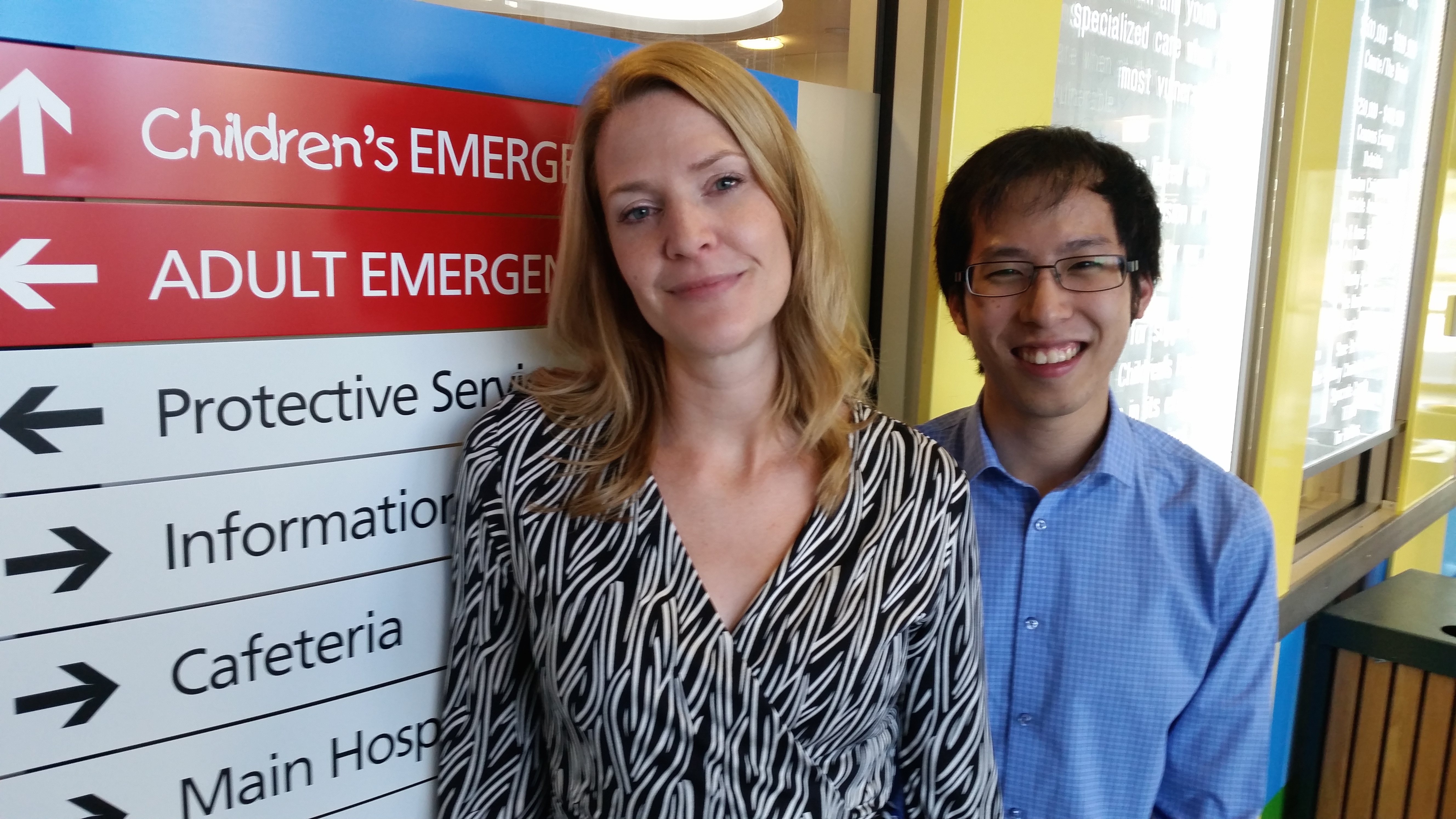
Amanda Newton and Conrad Tsang
A Faculty of Medicine & Dentistry study at the University of Alberta is giving new insight into the youth visiting Alberta's emergency rooms for self-harming behaviour. The study, published in the March edition of the Canadian Journal of Emergency Medicine, examined approximately 6,000 visits of young patients from 2002 until 2011. It found youth from families who received various government subsidies, and First Nations youth, had far higher visitation rates to emergency rooms for self-harm compared to youth from families who didn't receive a subsidy.
"We don't talk enough about the social determinants that underpin mental health," says Amanda Newton, lead study author and associate professor in the Department of Pediatrics. "This study points to a need to have a discussion of how the living and social conditions of children can affect mental health. Deliberate self-harm reflects an unhealthy way of coping."
The study from Newton, along with co-authors Rhonda Rosychuk and Conrad Tsang, found youth from families with a human services program subsidy represented three per cent of Alberta's pediatric population, but accounted for seven per cent of the emergency room visits for self-harming behaviour. Youth from families receiving subsidy from government sponsored programs made up 11 per cent of the population but accounted for 17 per cent of the visits. And First Nations children represented only six per cent of Alberta's pediatric population, yet made up 16 per cent of all visits for self-harming behaviour.
"For youth in families who received a government subsidy for low income, the subsidy may offset the family's financial costs but it may not offset mental health-care needs or the psycho-social needs of children in these families," says Newton. "This may be one of the reasons why we are seeing disproportionately more visits amongst some young people. A closer examination of what government subsidies provide to Alberta families may reveal broader mental health and social services policy gaps that could be addressed."
The study also examined how long it took youth to see a physician after their first visit to the emergency department. The research showed that on average, children from families with no government subsidies made a physician visit 16 days afterwards. Alternatively, First Nations children did not see a physician until 39 days later.
"The thing we don't know is if youth went to see somebody else," explains Newton, explaining that the patients could have seen a non-traditional health-care provider, or received other culturally grounded supports. "The issue still remains though, that even if other supports were sought after an emergency department visit, the visit rates are still very high to begin with."
The study also showed important reductions over the course of the nine years examined. According to Newton, self-harming behaviour made up 19 per cent of all mental health visits by youth to emergency rooms in 2002-2003. By 2010-2011, that number had dropped to 13 per cent.
While Newton says the falling visit rates are a sign of improvement, she warns that much work still needs to be done to help youth at greater risk. Conrad Tsang, a University of Alberta medical student that contributed to the study, echoes this concern, saying the research should help inform future clinical practice to better serve the youth in most need.
"Evaluating policy regarding the social determinants influencing mental health can contribute towards suicide prevention," he said. "By not only reducing the barriers towards timely access of care, but also strengthening community-based interventions, and particularly in the case of First Nations by making culturally grounded programs accessible, policy changes should improve the capacity to deliver quality care to the groups that need it most."
Both Newton and Tsang believe the study raises more questions than answers. But they hope with more study, solutions can be found to better help youth in need. "We have a responsibility to now investigate more broadly why the visit rates are high for some kids and not others, and take action to address self-harming behaviour well before an emergency department visit is made."
The research was supported by funding from the Canadian Institutes of Health Research, and Tsang received support from Alberta Innovates Health Solutions, and the Women and Children's Health Research Institute. Newton is a Canadian Institutes of Health Research New Investigator.